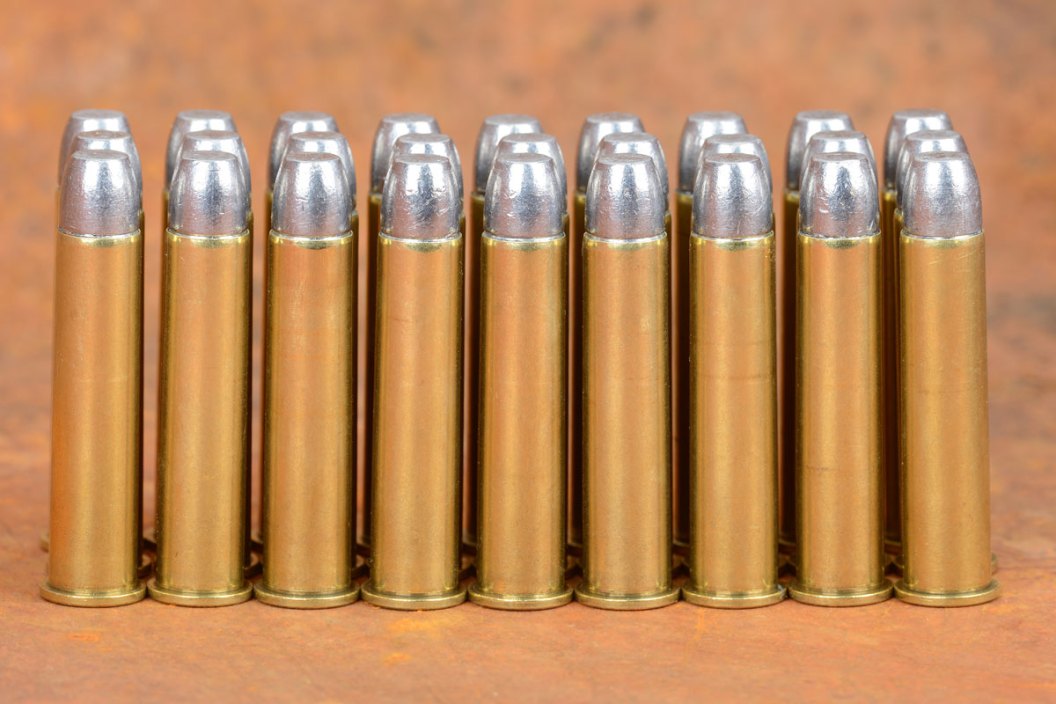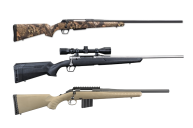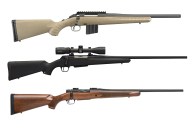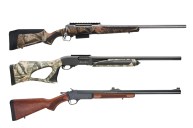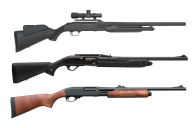Why are straight-wall cartridges getting a second life?
If you've been hearing a lot about straight-wall rifle cartridges in the past few years but don't exactly know why people care so much, here's a crash course.
It's really quite simple. In the Midwest, there are several states, like Iowa, Indiana and Ohio that changed their hunting rules a few years back. In locations where only muzzleloaders and shotgun slugs could be used to hunt whitetail deer, hunters are now permitted to use rifles chambered for centerfire, straight-wall cartridges during deer season.
They're exactly as they sound: the walls of the cartridge are perfectly straight, making a perfect cylinder. The cases do not taper nor do they bottleneck, meaning they have no shoulder. This what all rifle cartridges were like once upon a time. But, when firearm design was able to handle higher pressures, that all changed.
Why are these acceptable for hunting where typical rifle rounds are not?
Without that bottleneck, the pressure of straight-wall cartridges remains pretty low, and while they produce impressive muzzle velocities, they typically fire heavy bullets. Straight-wall cartridges are pretty much good for 200 yards and closer. Anything farther, and things start getting dicey, as the heavy bullets lose velocity and drop rapidly.
This is why they were nearly obsolete for most uses until recently, they just can't reach out to long ranges. In this case, that limitation is an advantage that has given straight-wall cartridges a second life and extended a lot of hunters' gun seasons.
They're more suitable for areas too densely populated for typical rifle rounds, which can travel a couple miles. They also offer far greater accuracy and reliability for hunters than shotgun slugs, and they're much easier to use than muzzleloaders. The guns that use them are also typically lighter than slug guns.
Cartridges like the old .45-70 Govt. have been around since the Old West, while newer cartridges like the .450 Bushmaster and the .350 Legend (a new cartridge debuted at SHOT Show by Winchester just a couple years ago) have great ballistic capabilities with muzzle velocities well over 2,000 fps while producing less felt recoil than a 12-gauge shotgun.
A .350 Legend rifle kicks less than a 20-gauge and is a formidable hunting cartridge inside 200 yards. The .450 Bushmaster is a powerful round and could take big game at close ranges, but it makes a heck of a deer gun, usually dropping whitetails where they stand with the right shot placement.
There are also a number of what people think of as revolver cartridges that are more than capable of taking deer-sized game when fired through a rifle or carbine barrel, picking up a velocity boost.
The .44 Rem. Mag and even the .357 S&W Magnum have taken plenty of deer. And, you can even find the beefy .500 S&W Magnum in a lever-action rifle and even an AR, although some states have limits on case length, which makes large shells like the .500 S&W illegal to hunt with.
While straight-wall cartridge centerfire rifles have traditionally been lever guns, which behave well with rimmed cases, there are more and more capable bolt-action and even semi-auto rifles hitting the market as this trend continues.
NEXT: THE GARMIN XERO S1 TRAPSHOOTING TRAINER IS $200 OFF UNTIL END OF APRIL
WATCH
